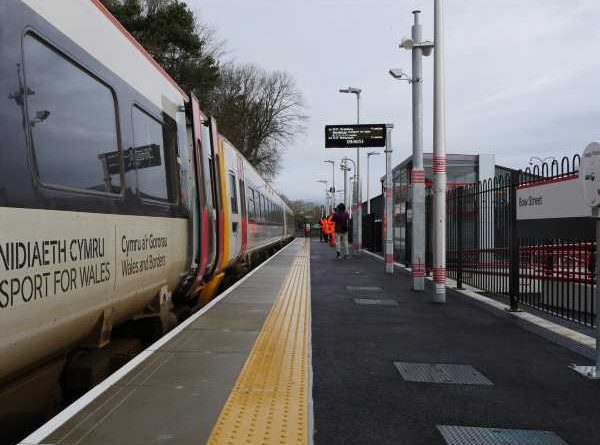Village welcomes first train in 56 years as new station opens
A village in Wales has welcomed its first train in 56 years when the 09:12 service from Machynlleth to Aberystwyth stopped to collect passengers at Bow Street on Sunday.
The station in Ceredigion provides a link to the national rail network for the local community for the first time since 1965, when the old station was shut down as part of the infamous Beeching cuts.
The opening of the £8 million project saw little fanfare due to Covid-19 restrictions, but planners hope it will generate more than 30,000 new trips each year – based on pre-Covid levels – and reduce congestion and over-parking in nearby Aberystwyth.
“This is great news for passengers and the local area. The station will bring social and economic benefits to the area, which alongside the nearby active travel routes will make it easier for people to travel in a sustainable way,” said Welsh transport minister Ken Skates.
“The funding we have provided is a sign of our ongoing commitment to improving the railway in Wales and giving more choice to passengers.”
Read more
The new single-track station at Bow Street features a 70-space park and ride car park, a bike shelter and a real-time information point.
It is just south of the old station, which closed after 101 years’ service and is now the site of a builders’ merchant.
INDY/GO Weekly Newsletter
TIME TO TRAVEL!
Read our full mailing list consent terms here
INDY/GO Weekly Newsletter
TIME TO TRAVEL!
Read our full mailing list consent terms here
James Price, chief of Transport for Wales, said: “It is testament to the skill and hard work of our teams that they have been able to deliver this new station despite the many challenges caused by the COVID-19 pandemic over the last year.
“Public transport is currently open to those making essential journeys only, but we look forward to welcoming residents and visitors to Bow Street when lockdown restrictions have changed and it is safe to do.”
The Beeching cuts saw thousands of British stations closed in the 1960s – decimating rail access for many local communities – as part of an effort to reduce financial losses imposed by increasing competition from road transport.
Source: Read Full Article






